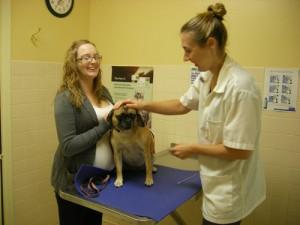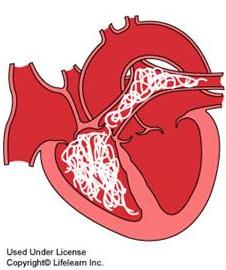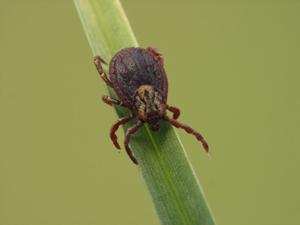
The causes of arthritis in dogs and cats have been discussed in our previous blogs – arthritis is a progressive chronic painful condition that involves inflammation of the joints.
What happens after a veterinarian has recognized arthritis in your pet?
A treatment plan should be tailored to your pet’s individual needs – usually with a combination of several therapies.
1) Surgical correction
If your pet has an underlying orthopedic condition that could lead to secondary joint disease, it is important to surgically correct this condition as soon as it is diagnosed.
2) Weight loss
Arguably the most important thing you can do for your pet’s joint comfort is to keep your pet at an ideal body weight. Over half of the pets that we see are overweight and losing those “few extra pounds” can drastically improve your pet’s quality of life. The first step is learning what your pet’s healthy body weight is – you may be surprised by how much of a waist your cat or dog is supposed to have.
3) Gentle and controlled exercise
Pets with arthritis are generally quite stiff when they first get moving in the morning. However, short frequent walks with your dog and brief play sessions with your cat helps their joints stay lubricated through motion.
4) Supplements such as glucosamine, chondroitin and omega 3 fatty acids
Glucosamine and chondroitin are building blocks for cartilage repair. It has been suggested that consuming them can help rebuild damaged cartilage and possibly decrease joint inflammation. Omega 3 fatty acids are also believed to have anti-inflammatory benefits when taken orally. Not all products are created equally – our article on nutraceuticals elaborates on this. It is also possible for your veterinarian to inject certain cartilage building blocks (such as polysulfated glycosaminoglycan) into your pet’s body. Polysulfated glycosaminoglycan is also believed to have anti-inflammatory benefits on joints.
5) Specialized diets
There are veterinary therapeutic diets that are formulated specifically for pets with arthritis. In addition to being optimally balanced, these diets incorporate supplements including glucosamine, chondroitin and omega 3 fatty acids. Scientific trials are run on these diets to show improved joint health in pets with joint disease. The veterinary pet food industry invests significantly to research ways of treating conditions through diet.
6) Anti-inflammatory and pain medications
There are a number of veterinary medications that can block pain receptors and also bring down the swelling in joints. These drugs can improve a pet’s mobility and quality of life. These meds are best discussed with your regular veterinarian. Please never give your pet human medication.
7) Rehabilitation therapy
Animal rehab is a growing field and there are veterinarians that specialize in this field. Rehabilitation uses custom physiotherapy exercises, hydrotherapy (in the form of a water treadmill), therapeutic laser, and electrical nerve stimulation. These tools help strengthen a pet’s muscling and improve joint function/range of motion and decrease pain.
8) Alternative therapies
Acupuncture: A veterinary acupuncturist inserts needles to stimulate the healing process or releases hormones that help with pain or inflammation.
Chiropractic: An animal chiropractor uses spinal or joint manipulation to attempt to re-establish normal movement and improve the pet’s sense of well-being.
9) Environmental changes
Modifications can be done in your pet’s home to decrease stress on its joints; gripping surfaces on the floor, thick padded bedding, heating pads and ramps or steps to avoid high jumps or excessive stair use.
The goal of arthritis treatment is to maintain your pet’s comfort level and to delay the progression of its joint disease. Arthritis management is possible by keeping your pet at an ideal body weight and by collaborating with a veterinarian to create the best plan for your pet.
If you have any questions about your pet and arthritis give our team at Mitchell Veterinary Services a call.















